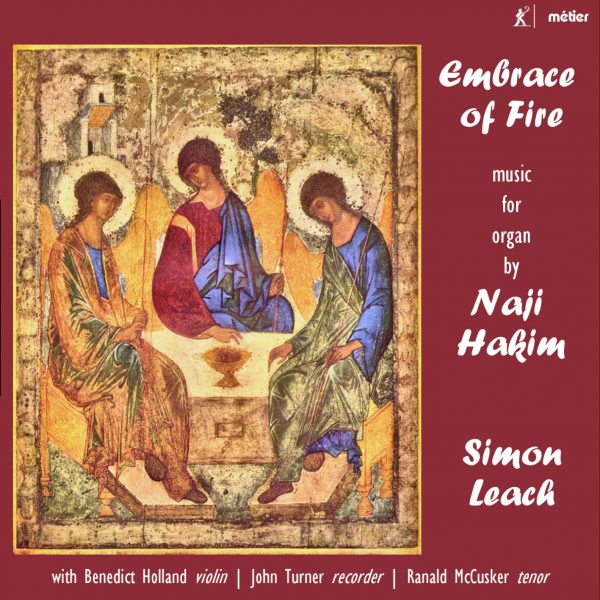Cathedral Music
The beautifully canted plainchant from Ranald McGusker, one of the finest of the younger generation of British singers, gets this imaginative recording of to a good start. Ranald gives place to that experienced violinist, Benedict Holland, who gloriously supplies an upwardly mobile meditation on the traditional chant theme.
More lively virtuosity succeeds this in the form of Hakim’s infectious Capriccio of 2005 for violin and organ, which finds in Holland an entirely committed advocate of sure-fingered technical accomplishment combined with depth of expression.
Hakim’s immense experience as improviser and composer is well to the fore in the cycle of movements authoritatively delivered by Simon Leach on the superb Hill instrument at the Church of the Holy Name in Manchester. Leach steers a compelling course through Hakim’s intense score with brilliance of articulation and, importantly, clarity of utterance. Each of this trilogy’s three movements is headed by a passage drawn from the New Testament.
Hakim’s Toccata follows. This has always been a close personal favourite of mine among introits in the Roman Graduale – it was the first Capitular Mass I ever played at London’s Westminster Cathedral. It is emphatically in the [post] Tournemire tradition, a glorious utterance following the sung chant, with its full ‘Gloria’ and its internal repeat from the opening and closing of the introit as an entity. This is Ranald McCusker’s final excellent contribution, notable for security of pitch and expressive tone.
Hakim’s Diptych [Cantilène and Humoresque] follows, featuring the brilliance of John Turner’s recorder in the spirit of Vierne’s Pilces de Fantaisie – a further solo enhancement in this memorable recital. So perfect is the intonation that the recorder sounds ‘from’ the organ rather merely ‘with’ it. Remarkable.
To close comes Hommage à Igor Stravinsky, the premiere of which was given at the Royal Festival Hal. At the heart is a lively dance, and the work – and this high-octane recording – concludes with a brilliant Final. Part of the motivic structure of the suite is influenced by, and based upon, the rich heritage of Gregorian chant.
Warm congratulations to organ-builder David Wells for the excellence of his tuning and regulation, and to recording engineer Richard Scott, who gets the best of one of England’s very finest West Gallery instruments. A minute quibble is the perhaps too brief continuum between the tonality of the first two tracks – just a little more space between the closing of the singing and the onset of the organ and violin Salve would have been welcome.
@divineartrecordingsgroup
A First Inversion Company
Registered Office:
176-178 Pontefract Road, Cudworth, Barnsley S72 8BE
+44 1226 596703
Fort Worth, TX 76110
+1.682.233.4978












